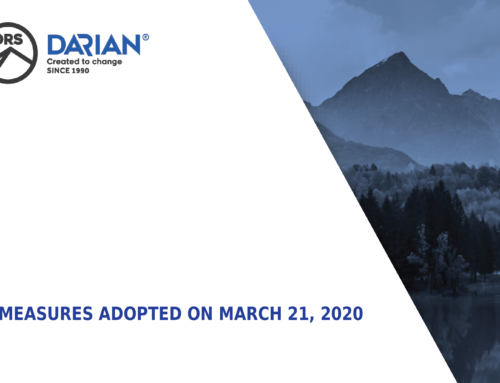Since early 2017, ANAF (National Agency for Tax Administration) has announced that it has conducted risk analyses to select companies, large taxpayers, to be checked. According to an ANAF press release, 108 large taxpayers were selected and the main criterion used in the analysis was the risk associated with transfer pricing. It is therefore noticed that transfer pricing is an increasingly targeted area by tax authorities, a field that can generate tax risks among any type of taxpayer.
In the context of ANAF checks and in the spirit of the objective of combating tax evasion and fraud, it is noted that tax audit becomes more and more dynamic, and this is reinforced by the ANAF results of tax audits carried out by the authorities during the first quarter of 2017, published in a recent press release:
- 42,000 checks (natural and legal persons) by 13.26% more than in the first quarter of 2016;
- 2.065,07 RON billion – amount attributed to the consolidated general budget;
- 648,95 RON billion – reduced tax loss;
- 10.300 contravention fines amounting to RON 49.31 million in total, by 18.17% more than in the first quarter of 2016;
- 12.469 fines collected in total amount of RON 50.57 million by 36.98% more than in the first quarter of 2016;
- 780 inquiries for additional checks with total damage of RON 1,491.45 million.
Although the outcomes concern all areas of taxation, and there is currently no concise data on the results of transfer pricing checks, we note that this topic is of interest in case of tax audits.
Legal Provisions
Transfer pricing refers to intra-group transactions that can be attributed to the tax authorities, which may require documentation of compliance with the market value principle under Article 108, paragraph (2) of the Code of Tax Procedure: “In order to document the observance of the market value principle, the taxpayer / payer carrying out transactions with affiliated persons has the obligation to prepare the transfer pricing file. At the request of the competent central tax body, the taxpayer / payer has the obligation to present transfer pricing file“.
The amount of the transactions for which the companies have the obligation to prepare the transfer pricing file, the deadlines for its drafting, the content of the transfer pricing file, as well as the conditions under which it is requested, are regulated by the ANAF President Order no. 446/2016. Also this administrative-tax document established the procedure for adjusting / estimating the transfer pricing.
If the companies do not comply with the obligation to prepare the transfer pricing file under the conditions and deadlines stipulated by ANAF President Order no. 446/2016, as well as do not comply with the obligation to present the transfer pricing file at the request of the central tax body under the conditions of Article 108 paragraph (2), this constitutes a contravention and is sanctioned as follows:
- fine from RON 12,000 to RON 14,000 for medium and large taxpayers;
- fine from RON 2,000 to RON 3,500, for other legal entities, as well as for individuals.
Practical aspects
How do we prepare?
First, before analyzing the transfer pricing, a tax audit will examine the supporting documents – their existence and their form. For this reason, companies should have the contracts (with all addenda and annexes), invoices (together with work statements, estimates, timesheets, etc.) and y other documents necessary to support the physical trading of goods or the supply services.
In the absence of supporting documents, tax inspectors may consider the related costs non-deductible, and the transfer pricing documentation becomes unnecessary in this situation for those transactions.
Also, if the documents submitted are not properly drafted (for example, the contractual provisions are not clear enough), the tax inspectors may proceed with the re-framing of a transaction / activity to reflect its economic content (under Article 11, paragraph (1) of the Tax Code).
In this respect, the recommendation would be that all documents supporting a transaction, and in particular the contracts concluded with the group companies, be verified both legally / commercially and in terms of tax.
We draw attention to the fact that it is particularly important to delegate the persons involved in the relationship with tax authorities – it would be advisable to be both a person in the technical department to describe the operational process and the way the business operates, as well as a person from the financial-accounting department which will also present to the auditors the transaction flow from this point of view.
The advantages of drafting the transfer pricing file
We also highlight the fact that although transfer pricing legislation provides for certain deadlines for submission of the file, which may be extended on the basis of a request, in practice the tax authorities only grant the maximum time for submission of the file in exceptional circumstances. Thus, in most cases, in practice, the deadlines granted by the tax auditors prove to be insufficient, taking into account all the necessary steps for the drafting of the transfer pricing file.
Therefore, a prudent approach for companies carrying out intra-group transactions would be to prepare the transfer pricing file early, which also has many advantages, such as:
- the process of compiling the transfer pricing file can be a useful exercise to simulate a tax audit;
- the company knows the real situation of the prices used in the intra-group transactions, the risk areas it is exposed to and can make certain decisions in this respect;
- The company can identify tax optimization opportunities in accordance with the legal provisions in force.
What sanctions do we risk in case of non-compliance?
Therefore, as mentioned above, companies that do not comply with the legal provisions for the compilation and presentation of the transfer pricing file will be anctioned in the first instance by a fine/strong>.
However, at the same time, tax authorities may also adjust transfer pricing if intra-group transaction prices do not fall within the market interval. Such an adjustment may significantly affect the business activity of the company because:
- Intra-group pricing adjustment often leads to the establishment of major tax obligations from the perspective of corporate tax, as well as interest and late payment penalties – in many cases, with a significant impact on cash flows. If the company is in a loss position, then the tax loss to be carried forward in the following years will be reduced;
- as a consequence of affecting cash flows, investment objectives may be stopped and performance indicators may also suffer;
- all companies in the group are affected as adjustments are made “in the mirror” even to the companies in the group with which transactions are conducted.
Article published firstly on Avocatnet.ro.



Suntem soluția eficientă în oferirea de servicii complexe de evaluare și consultanță pentru clienții corporativi. Echipa noastră de specialiști asistă clienții în soluționarea diverselor spețe cu impact fiscal.






